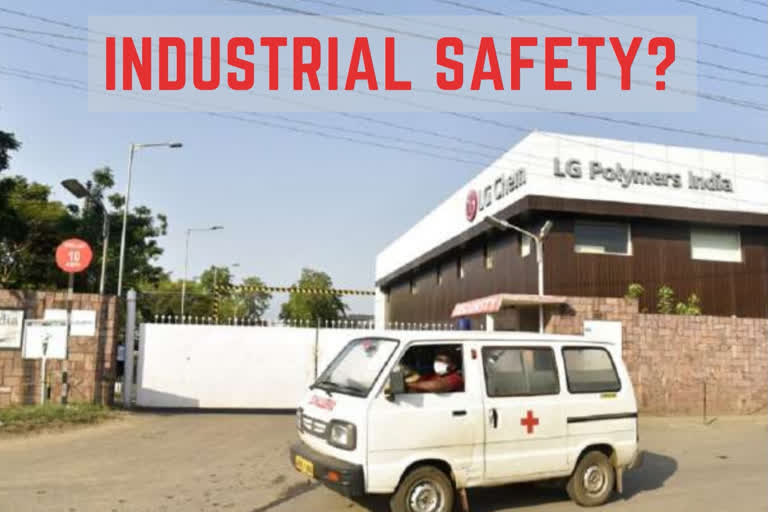Hyderabad: There is no greater tragedy than air suffocating people to death. As many as 12 persons were killed and over 1,000 fell ill after the toxic gases from a polymer plant in Vishakhapatnam leaked into surrounding villages.
This horrifying incident reminded everyone of the Bhopal gas tragedy of 1984.
In the second week of April, the Indian Chemical Council requested the Center to identify the industry as essential and exempt it from lockdown norms, as the supply of certain chemicals were key to manufacturing several drugs.
As a result of lockdown exemptions, the LG Polymers Plant started production, leading to leakage of fatal styrene vapours. Livestock and pets were killed by the vapours while several adults and children experienced living hell before succumbing to the toxic gases.
Read: Post-gas leak, people sleep on beach road in Vizag
LG Polymers did not censor the claim that the nationwide lockdown was the reason behind this accident in a plant that needed constant maintenance.
In January, LG Polymers’ corporate newsletter revealed that 14 workers were killed in a fire accident in a 100-year old sugar plant, due to lack of hygiene.
In the same newsletter, the company promised to uphold the best practices in safeguarding the environment and promote social responsibility.
If the company had indeed implemented those practices, this gas leak could have been averted.
The Andhra Pradesh government has reasonably responded to the fire tragedy, by announcing compensation to the victims.
Keeping in view the Bhopal tragedy, the government must pay special attention to the long-term health effects on people residing in the surrounding areas of LG gas leak.
The chemical industry, which accounts for 3 per cent of India’s GDP, has grown to a diverse portfolio of petrochemicals, fertilizers, paints, disinfectants and pharmaceuticals, with over 70,000 commercial products.
Though 15 laws and 19 rules regulate the Indian chemical industry, none of them per se, are directly focused on the industry. Further, India’s draft National Chemical Policy is still in the final stages of approval since 2014.
After the devastating Bhopal gas leak that killed thousands and impaired lakhs of people, affecting generations to come by; the Center had taken a stern stand against the chemical sector. But, in the recent years, the stand has been softened, thanks to the economic reforms.
Read: Vizag chemical plant gas leak incident needs to be fully investigated: UN chief
In the domestic chemical industry, there has been an average of 4 major accidents over the past 3 years – a dismal state that mirrors the lack of comprehensive legislation that regulates the production and usage of chemicals.
The market size of the chemicals industry in India stands at USD 178 bn and is expected to double by 2025.
The Center said that Dahej (Gujarat), Paradip (Odisha), Cuddalore (Tamil Nadu) and Visakhapatnam (Andhra Pradesh) will be developed as manufacturing hubs.
Since destruction almost always follows unsustainable development, the aftermath of these industries should not be neglected.
These chemical plants must be allowed to operate only outside the residential limits. They must be braced with advanced security arrangements.
It is not enough to celebrate Chemical Disaster Prevention Day on December 4 every year. Governments and industries must ensure safe working conditions. Only then, industrial safety can become a thing in India.
Also Read: Vizag gas tragedy: Andhra HC issues notice to state, center



